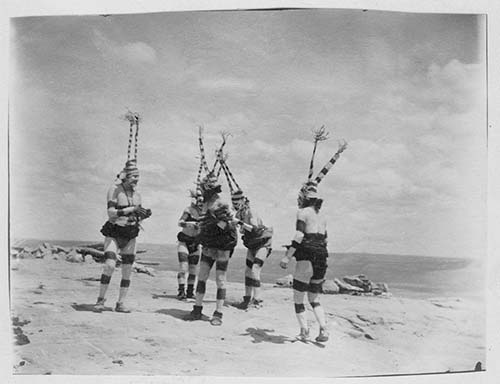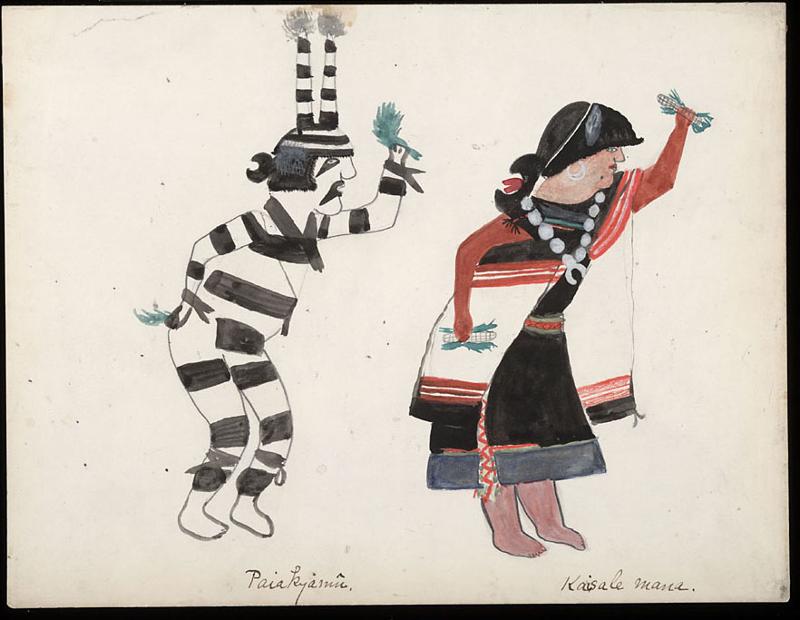Worldview and Ceremonial Organization
Like other Puebloan groups, the Hopi believe that their ancestors came to the earth from the underworld. Once arriving in this fourth, or outer, world, the people dispersed over the earth in a series of migrations. After death, individuals will return to this underworld, emerging as kachina spirits during the summer to bring the rains so needed for the crops. Hopi ideology emphasizes unity and cooperation; aggressive behavior is frowned upon. Gossip and gentle belittling by the clowns who perform at kachina ceremonies are the primary forms of social control.
|
Five koshare clowns performing at the Hopi-Tewa village of Hano, ca. 1891 |
1899 drawing of a Koshari clown in striped body paint and cap with horns |
|
Source - BAE GN 01820K1 06312201, National Anthropological Archives, Smithsonian Institution
|
Source - Local number NAA INV 08547446; Manuscript 4731, National Anthropological Archives, Smithsonian Institution |
Hopi ceremonies follow an annual, calendrical cycle consisting of two major periods. The first cycle, beginning in January or February and continuing until July, marks the period when the kachina spirits are present in the villages. Ceremonies during this period are focused on the kachina dances, when men where masks to impersonate the kachinas. This cycle ends with the Niman dances, which coincide with the end of planting in the fields and with the return of the Kachina to their spirit homes. The remainder of the ceremonial year is devoted to non-masked social dances.
Click on next page to continue.


